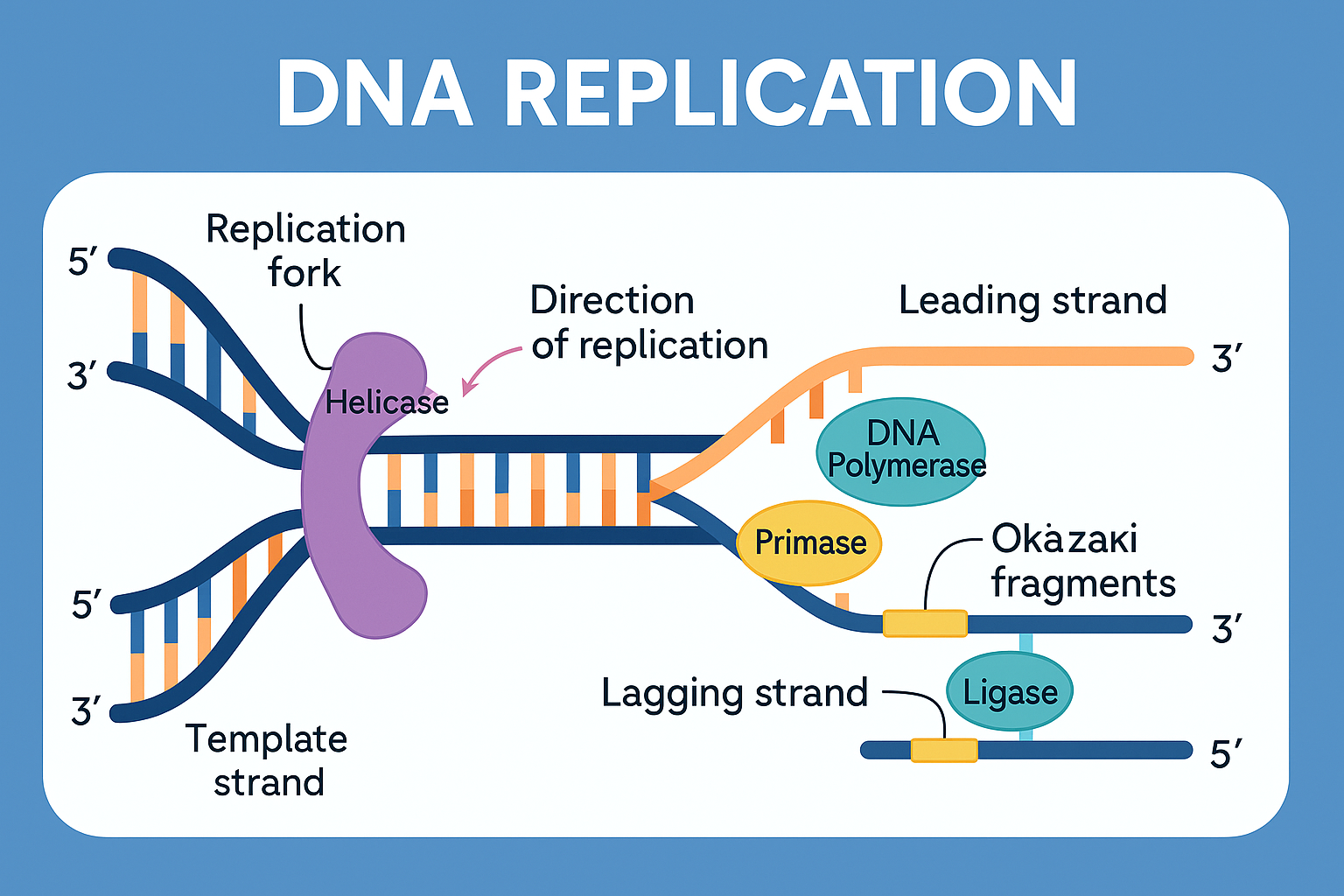🧬 DNA Replication – Enzymes, Directionality & What to Know for Test Day
DNA replication is one of the most fundamental biology concepts tested on the DAT—and one that can easily trip you up if you forget your enzymes or strand directions. Whether it’s matching enzyme function or understanding why Okazaki fragments form, today’s breakdown will make sure you get every point on DNA replication questions.
🔬 Core Concepts You Must Know
DNA Replication Basics
Semi-conservative: Each new double helix has one old strand and one new
Starts at the origin of replication
Replication fork forms → one strand is synthesized continuously (leading) and one discontinuously (lagging)
🔬 Key Enzymes in DNA Replication
| Enzyme | Function |
|---|---|
| Helicase | Unwinds the DNA helix at the replication fork |
| Topoisomerase | Relieves supercoiling ahead of the replication fork |
| Primase | Synthesizes RNA primers needed to initiate DNA synthesis |
| DNA Polymerase III | Adds DNA nucleotides to the RNA primer in the 5′ → 3′ direction |
| DNA Polymerase I | Replaces RNA primers with DNA nucleotides |
| DNA Ligase | Seals the nicks between Okazaki fragments on the lagging strand |
🧠 Mnemonic: “Help The Pretty Doctor Locate DNA” (Helicase, Topoisomerase, Primase, DNA pol, Ligase)
3. 5' to 3' Directionality
DNA is always synthesized 5′ to 3′
Template strand is read 3′ to 5′
Leading strand: continuous
Lagging strand: Okazaki fragments, sealed by ligase
📈 DAT-Style Question Example
Q: Which enzyme replaces RNA primers with DNA nucleotides during replication?
A: DNA Polymerase I
✅ Expect questions that test enzyme names, strand synthesis direction, or visual interpretation of replication forks.
🎯 DAT Strategy Tips
✅ Know each enzyme’s role and order of action
✅ Practice identifying 3′ and 5′ ends in diagrams
✅ Understand what makes the lagging strand “lag”
✅ Use KOTC's Adaptive Q-Bank to drill replication enzyme questions
✅ Memorize with visuals, mnemonics, and real DAT-format questions
Explore kingofthecurve.org/studyscience for full molecular biology visual decks.
🚀 Call-to-Action
Want to feel confident with DNA replication on test day?
Download the KOTC App for:
Replication pathway animations
Enzyme flashcards
Gamified biology quizzes
Curve Coin rewards + timed tests
💥 Master the fork, conquer the curve.
Frequently Asked Questions (FAQs)
-
Aim for 4-6 focused hours, ensuring you incorporate breaks to avoid burnout.
-
Practice mindfulness techniques, take practice exams under realistic conditions, and maintain a balanced lifestyle.
-
Set short-term goals, seek support from mentors, and reward yourself for small achievements.
-
Regular exercise improves focus, reduces stress, and enhances overall mental clarity.
-
KOTC offers personalized learning tools, gamification features, and adaptive question banks to help students stay on track without burnout.


